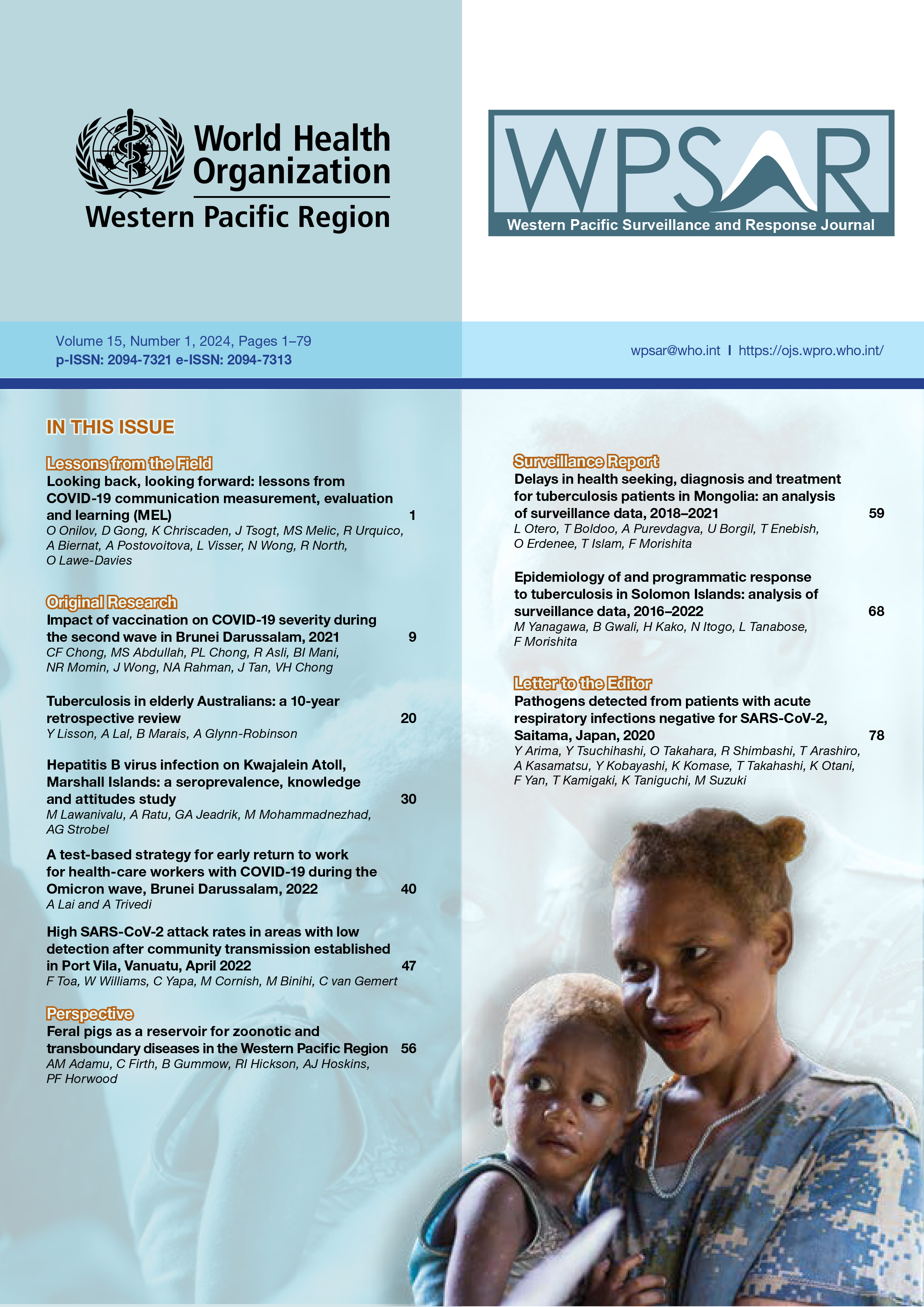Epidemiology of and programmatic response to tuberculosis in Solomon Islands: analysis of surveillance data, 2016–2022
DOI:
https://doi.org/10.5365/wpsar.2024.15.1.1106Keywords:
tuberculosis, epidemiology, surveillance system, Solomon IslandsAbstract
Objective: To identify progress and challenges in the national response to tuberculosis (TB) in Solomon Islands through an epidemiological overview of TB in the country.
Methods: A descriptive analysis was conducted using the national TB surveillance data for 2016–2022. Case notifications, testing data, treatment outcomes and screening activities were analysed.
Results: The number of case notifications was 343 in 2022, with an average annual reduction of the case notification rate between 2016 and 2022 of 4.7%. The highest case notification rate was reported by Honiara City Council (126/100 000 population) in 2022. The number of people with presumptive TB tested by Xpert® rapidly increased from zero in 2016 to 870 in 2022. Treatment success rate remained consistently high between 2016 and 2022, ranging from 92% to 96%. Screening for HIV and diabetes mellitus (DM) among TB patients in 2022 was 14% and 38%, respectively. Most patients (97%) were hospitalized during the intensive phase of treatment in 2022; in contrast, during the continuation phase, the proportion of patients treated at the community level increased from 1% in 2016 to 63% in 2022. Despite an increase in household contact investigations, from 381 in 2016 to 707 in 2021, the uptake of TB preventive treatment (TPT) was minimal (7% among eligible child contacts).
Discussion: This epidemiological analysis in Solomon Islands reveals both notable achievements and challenges in the country’s TB programme. One major achievement is a potential actual reduction in TB incidence. Challenges identified were potential underdetection of cases in rural areas, suboptimal community-based care, and insufficient contact tracing and uptake of TPT. It is crucial to address these challenges (e.g. by optimizing resources) to advance the national TB response.

